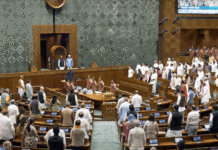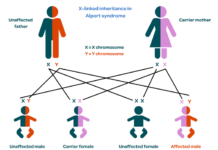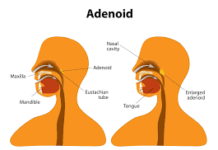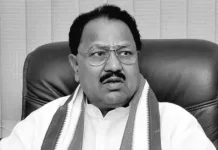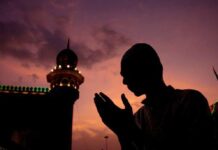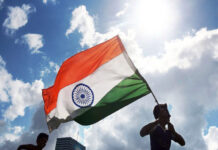I hate to reiterate this every now and then, but the fact is that the general Muslim Indian community wishes and makes every effort to assimilate with the cultural and national imagery of India; however, NOT at the cost of denouncing its identity of being Muslims
Two recent articles in the Indian Express which talk about Muslim political representation in India have caught my attention – the first one titled Sonia, Sadly by Harsh Mander and the second one titled Liberals, Sadly by Ramachandra Guha. The second article by Ramachandra Guha is in reply to the first one by Harsh Mander. Although addressing the same issue, both the articles reflect entirely opposite sentiments and vision of the Muslim Indians.
To begin with, I would congratulate Harsh Mander for being bold enough to not just remonstrate the status of the Muslim Indian community but also doing so knowing well that it may mean subjecting himself to criticism from this same community. For the first part, Harsh Mander has done a good job in showing the mirror to Sonia Gandhi and the Indian National Congress (INC) about their stance on Muslim representation in the recent times. Sonia and INC may eventually be seen as being averse to aligning their resources and action plans towards the amelioration of Muslim Indian community for fear of being branded as a “Muslim” party, as Harsh candidly puts it.
The difference in the two articles is this – while Harsh Mander not just acknowledges but also appreciates and encourages the significance of displaying Muslim identity, Ramachandra Guha ploys on the nasty excuse of cultural and national assimilation to undercut visual Muslim identity. He cites the example of Sadiq Khan, the Muslim mayor of London as a case of cultural assimilation where Sadiq Khan is appreciated as a liberal Muslim because he “does not wear a skull cap, and his wife does not wear a burka either.” This circumvents the very essence and vitality of Harsh Mander’s vision of Muslim Indian representation. Ramachandra Guha makes a cognitively retarded attempt to portray that the only way Muslims can demonstrate cultural and national assimilation is by forsaking their visual identity as Muslims.
To validate his stance on cultural diversity and assimilation, he ludicrously equates burqa with the trishul. He is so overcome by his vision of forsaken Muslim visual identity that he views it “…may not be a weapon, in a symbolic sense it is akin to a trishul”. To this end, I wonder how many such burqas have been employed for raping women and mercilessly killing adults and stabbing fetuses inside the wombs of expectant mothers during communal riots. Or for that matter, how does brandishing of trishuls, as per his perception, demonstrate “gender equality as well as cultural diversity”. Ramchandra Guha could probably also explain better how the display of trishuls “shows not merely in what” they wield,“but in what they believe in”. Let me remind Ramchandra Guha about how we must compare apples and apples and not apples and oranges to make cognitive sense – burqas are a symbol of visual identity for Muslim women (if that is the least of what he considers burqa to be) the same way as a mangal sutra is a symbol of visual identity for Hindu married women. And a burqa is much more than that – a mark of liberalism and emancipationfor the women who adorn it – something which the likes of Ramchandra Guha would perhaps never be able to comprehend. To object to its display in public is very much a mark of intolerance, and a repugnant renunciation of the right to freedom of religion as enjoined by our Constitution.
Another aspect that points to the immature and repugnant cognition of Ramchandra Guha is his choice of whom he claims to be promising Muslim leaders of the past. He counts Sheikh Abdullah, Hamid Dalwai, and Arif Mohammad Khan and meticulously ignores the likes of Maulana Abul Kalam Azad. What makes him ignore Maulana Azad is not his ignorance of history, but another of his ludicrous attempt to prove his point that “The only leadership Indian Muslims have is basically communalist.” He argues that “Unless a Muslim liberal intellectual class emerges, Indian Muslims will continue to cling to obscurantist medievalism, communalism, and will eventually perish both socially and culturally.” And what he precisely means by liberal intellectual class of Muslim leader is leaders who have the propensity to abdicate their visual identity as Muslims. This obviously is the only way to identify liberal intellectual class of Muslim leader – since to Guha, the liberal intellect of a Muslim leader is outworn the moment a leader is seen with beard and a skull cap. He even goes on to the extent of holding Muslim medievalism and communalism responsible for Hindu revivalism – “A worse possibility is that of Hindu revivalism destroying even Hindu liberalism…” How can a majority Hindu liberalism be challenged by a Muslim medievalist or communist – as claimed by the Right Winged Sangh Parivar as well – has always failed my cognition. Would Guha proclaim next that Muslim conservatism was also eventually responsible for the demolition of Babri Masjid? To me, the likes of Ramchandra Guha fall in the category of Islamophobic Communist Liberals – who though talk and behave as apparent liberals yet have not been able to shun their communist vision completely enough to be able to accept and appreciate the independent identity of Muslims.
Ramchandra Guha further states that “Among Indian Muslims there is no such liberal minority leading the movement towards democratic liberalism.” This is one of the most incongruous and bizarre wishful thinking to come from a perceived liberalist of the stature of Guha. Perhaps he would do well to remember the contributions of recent Muslim Indian leaders like APJ Abdul Kalam and Late Syed Shahabuddin, IAS. Guha claims that we need an agreement among all liberal intellectuals to create a non-political movement against all forms of communalism.” This is one point where both Guha and Mander agree – that Muslim Indians must stay away from politics. The cognitive irony of the situation is that we have a politically active group of conservative Hindutva bigots challenging Indian liberals at every walk of life today, which perhaps may not be uprooted without political dynamism.
Majoritarianism is a grave threat to the secular fabric of India and Muslim conservatism is an offshoot of this same Hindutva Majoritarianism; not vice versa. Isn’t is sad that it’s always the minority that is expected to demonstrate its spirit of assimilation to the “national and cultural” fabric? Evidently, majoritarian culture is precisely what defines national culture many a times. If the chief minister of a state can adorn saffron and a tilak, what is objectionable in a Muslim Indian leader adorning beard, or skull cap, or burqa? Majoritarianism threat to secularism and national integrity has been witnessed multiple times both before and after 1992 (demolition of Babri Masjid).
We, the general Muslim Indian community, detest Muslim conservatism as much as Ramchandra Guha detests Hindutva conservatism – something that Guha prefers to denounce outright. I hate to reiterate this every now and then, but the fact is that the general Muslim Indian community wishes and makes every effort to assimilate with the cultural and national imagery of India; however, NOT at the cost of denouncing its identity of being Muslims. The general Muslim Indian community of today is the offshoot of the same community that rejected the two-nation theory and chose to remain aligned to the spirit of Indian nationalism at the time of Partition. What bigger proof of our willingness to national and cultural assimilation do the likes of Guha require from this community?
[Sharjeel Ahmad is MBA and an Economics graduate. He is based in Saudi Arabia. COURTESY The Milli Gazette.]



